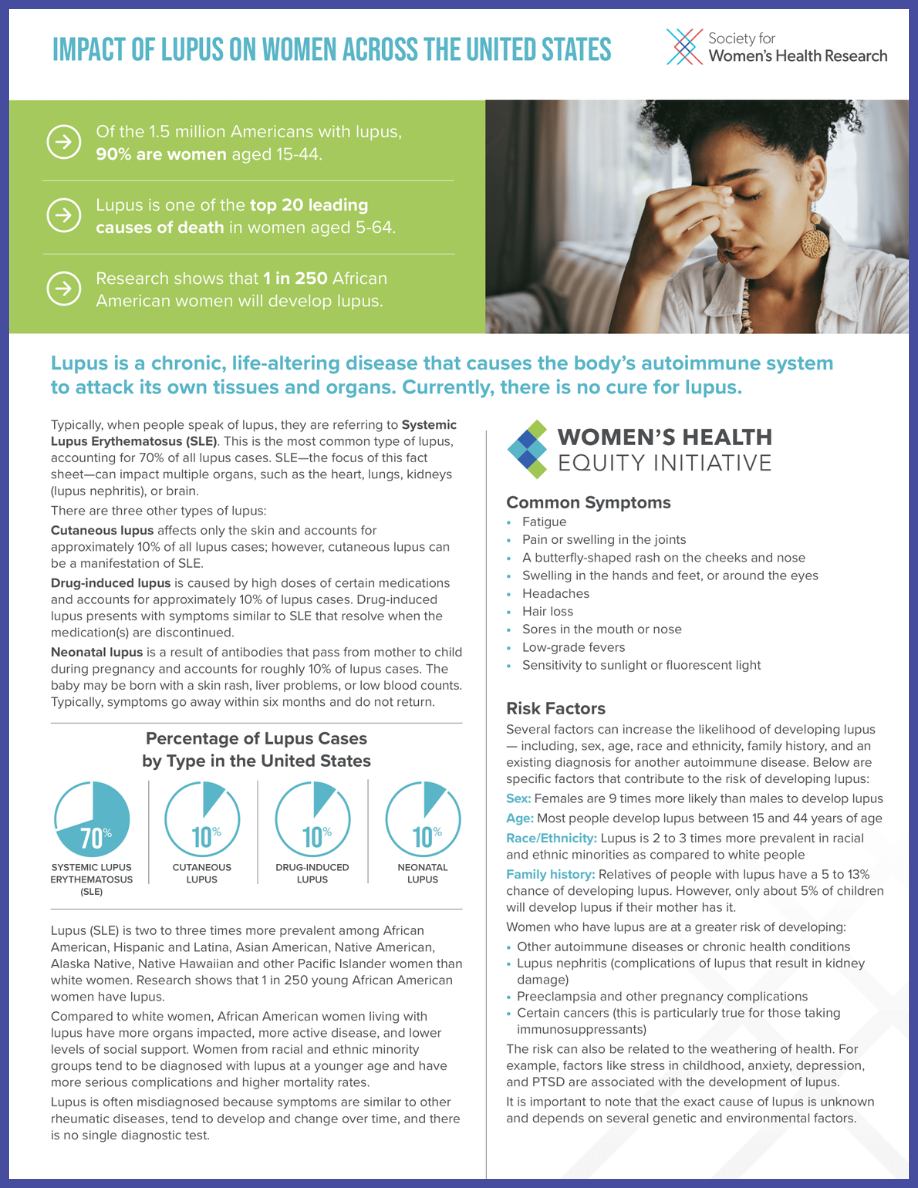Lupus is a chronic autoimmune disease characterized by widespread inflammation that often results in damage to the joints, skin, kidneys, lungs, and blood vessels. An estimated 1.5 million Americans have some form of lupus. Cutaneous lupus erythematosus (CLE) primarily affects the skin, whereas systemic lupus erythematosus (SLE) – the most common type of lupus – affects multiple parts of the body. Ninety percent of individuals with lupus are women between the ages of 15 and 44. Lupus is also more prevalent among women of color, who develop symptoms at younger ages and have more severe symptoms and complications from the disease. Women living with lupus have a greater risk for developing other health issues, such as heart disease, osteoporosis, or kidney failure.
Like many autoimmune diseases, there is no cure for lupus, and available treatments primarily focus on reducing symptoms and flares. There is a pressing need to address gaps in lupus research and clinical education to improve patient outcomes, as well as to develop policy solutions that will eliminate barriers to access for treatments and quality care for women.
Lupus is part of the SWHR Autoimmune Network, which engages the following focus areas: Autoimmune Diseases, Alopecia Areata, Atopic Dermatitis, Lupus, and Psoriatic Arthritis.















